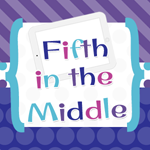OHIO SOCIAL STUDIES ACADEMIC CONTENT STANDARDS (2010)
Grade 4: Ohio in the United States
Government Strand
Civic Participation and Skills
15.
Individuals have a variety of opportunities to participate in and influence their state and national government. Citizens have both rights and responsibilities in Ohio and the United States.
Rules and Laws
19.
The U.S. Constitution establishes a system of limited government and protects citizens’ rights; five of these rights are addressed in the First Amendment.
SOCIAL STUDIES STANDARDS (2001)
Citizenship Rights and Responsibilities
Grade Level Indicators (Grade 5)
3.
Explain the significance of the rights that are protected by the First Amendment including:
- Freedom of religion;
- Freedom of speech;
- Freedom of the press;
- Right of petition and assembly.
I think that there are many students that do not fully understand their rights as United States citizens. Most kids are under the impression that they have to go to school, listen to their teacher, do their homework, go home, listen to their parents, and then start over again on the next day. They may think they are just kids, but there is a bigger picture, an important aspect that this lesson will teach students - students are also citizens with a voice. All citizens in the United States have a voice, and a right to express their opinions and make changes on things they do not believe is right or fair to everyone. Even as students, they can make a change in their school and/or in their community. I will use this lesson to show that to students. I want my students to understand the importance of the First Amendment in the Bill of Rights and that these rights apply to them, even as kids -because they are citizens of the United States.
I think that the biggest problem with this lesson plan is that it may not be exciting enough for kids. Yes, it is interesting, but it could be more exciting. The start of the lesson has a big "wow" factor and will get the students' minds rolling - but that excitement needs to be sustained for the rest of the lesson in the days to come. So, I will need to research and try to incorporate a few more things into the lesson that may add some time to the lesson/change the length, but will make it more exciting and fun for the students. I think the part that would challenge the students the most is staying on task. The lesson itself is not too difficult for this age group, but at this age students may get a little "goofy" with this lesson. For example, students may want to change the food that is served in the cafeteria because they think it is nasty and they want it to taste better - but what their focus should be on, is how is the food unfair for students in the classroom and how can you make the choices fair/accessible to all students (i.e., what other options could be made available for students who cannot eat dairy products?). I think students will be challenged in thinking seriously and staying on task - but for the most part, I believe this lesson will be a learning experience that they will take to heart and take seriously once they understand the First Amendment a little better and how they truly can impact/change their school or society for the better. They may only be students, but they are citizens of the United States that have rights which give them power to make a difference!
https://ims.ode.state.oh.us/ODE/IMS/Lessons/Web_Content/CSS_LP_S06_BB_L05_I03_01.pdf







No comments:
Post a Comment